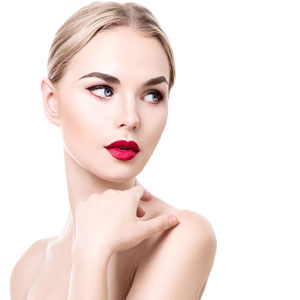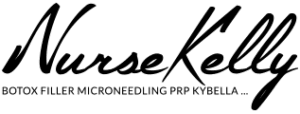
Conveniently located on Seven Mile Beach, Grand Cayman
UNDERSTANDING THE EFFECTS OF AGING ON LIP TEXTURE AND APPEARANCE

As individuals age, the lips undergo various changes that can significantly alter their appearance and texture. One of the primary effects of aging on the lips is a loss of volume and definition. Over time, there is a decrease in collagen and elastin production, leading to a reduction in the fullness and plumpness of the lips. In addition, the natural fat pads in the lips diminish, causing them to appear thinner and less defined. This loss of volume can result in the formation of fine lines and wrinkles around the lips, commonly known as perioral lines or “lip lines.” Moreover, repeated exposure to environmental factors such as sunlight and pollution can accelerate the aging process, leading to dryness, roughness, and uneven pigmentation of the lips. These changes can affect one’s overall facial aesthetics and contribute to a more aged appearance.
FACTORS THAT AFFECT LIP AGING
Several factors contribute to the aging of the lips, impacting their texture, volume, and overall appearance:
- Dehydration: Lips lack sweat glands and sebaceous glands, making them more susceptible to dehydration. Chronic dehydration can lead to dryness, cracking, and a rough texture, exacerbating the signs of aging.
- Diminished fat pads: Natural fat pads in the lips provide structural support and contribute to their plumpness. With age, these fat pads diminish, causing the lips to appear thinner and less defined.
- Genetics: Genetic factors play a role in determining the rate and extent of lip aging. Some individuals may inherit a predisposition to thinner lips or a faster breakdown of collagen and elastin, leading to premature aging.
- Hormonal changes: Fluctuations in hormone levels, such as during menopause or puberty, can affect the skin’s elasticity and hydration levels, potentially impacting the appearance of the lips.
- Loss of collagen and elastin: Collagen and elastin are proteins responsible for maintaining the firmness and elasticity of the skin. As individuals age, the production of these proteins decreases, leading to a loss of volume and definition in the lips.
- Nutrition and hydration: A diet lacking essential nutrients and hydration can contribute to poor skin health, including the lips. Adequate hydration and consumption of nutrients like vitamins C and E, which support collagen production, are crucial for maintaining lip health.
- Repeated facial movements: The constant movement of the lips, such as speaking, smiling, and puckering, can contribute to dynamic wrinkles, particularly around the mouth area.
- Smoking: Smoking not only affects overall skin health but also specifically impacts the lips. The chemicals in tobacco smoke can cause oxidative stress, collagen degradation, and discoloration of the lips, resulting in premature aging.
Sun exposure: Chronic exposure to ultraviolet (UV) radiation from the sun accelerates the aging process, leading to collagen breakdown, dryness, and the formation of wrinkles and fine lines on the lips.
Understanding these factors can help individuals take proactive measures to protect their lips from premature aging, such as wearing sunscreen, quitting smoking, staying hydrated, and adopting a skincare routine that includes lip care products. During consultation, Nurse Kelly considers these factors and provides personalized recommendations tailored to individual needs and concerns.
TREATMENT OPTIONS
Nurse Kelly offers the following treatment options to address signs of aging on lip texture and appearance :
Fillers
Fillers offer an effective solution to address the signs of lip aging by restoring lost volume, enhancing lip contours, and reducing the appearance of fine lines and wrinkles. Typically made of hyaluronic acid, a naturally occurring substance in the body, fillers work by attracting and retaining moisture, thereby adding volume to the lips and smoothing out wrinkles. During the procedure, Nurse Kelly injects the filler strategically into the lips to achieve the desired shape and fullness. The results are immediate, with lips appearing fuller and more youthful. In addition, fillers stimulate collagen production in the lips, providing long-term benefits for lip texture and firmness. Overall, fillers offer a non-invasive and customizable solution to address lip aging, providing natural-looking results with minimal downtime.
PERSONALIZED MEDICAL ASSESSMENTS AND TREATMENT PLANS

Nurse Kelly employs a personalized approach to medical assessments and treatment plans for addressing lip concerns using fillers. She begins by conducting a thorough assessment of the patient’s lip anatomy, considering factors such as lip volume, symmetry, contour, and the presence of fine lines or wrinkles. Through detailed discussions with the patient, Nurse Kelly identifies their aesthetic goals, preferences, and any specific concerns they may have regarding their lips. Based on this comprehensive evaluation, Nurse Kelly devises a tailored treatment plan that addresses the patient’s unique needs and desires. She selects the appropriate type and amount of filler to achieve the desired results, ensuring natural-looking outcomes that complement the patient’s facial features.
Nurse Kelly prioritizes patient safety and comfort throughout the treatment process, providing clear explanations and guidance while administering the filler injections. In addition, she offers post-treatment care instructions and follow-up appointments to monitor the patient’s progress and address any concerns. By integrating personalized assessments, open communication, and skilled application techniques, Nurse Kelly ensures that each patient receives customized lip enhancement treatments that enhance their natural beauty and boost their confidence.
LINKS TO TREATMENT OPTIONS

FILLERS |
Filler is injected under the skin to mimic collagen, and treat volume loss in areas of the face due to aging. |
TREATMENT OPTIONS FOR ACNE & BLEMISHES
CHEMICAL PEELS
They are a chemical solution applied to the skin which causes controlled damage to the top skin layers. Chemical peels, such as ZO Peel, stimulate the body’s natural healing process – new skin cells form in the treated area and the old and dead skin cells slough off. This prompts the skin to exfoliate and peel off. Depending on the skin condition, the chemical solution to be used can vary – alpha hydroxy acids (AHAs), beta hydroxy acids (BHAs), or trichloroacetic acid (TCA). These acids can help address acne as well as blemishes by stimulating collagen production, unclogging skin pores, reducing inflammation, and dissolving dead skin cells in the treated area.
GENESIS SKIN TREATMENT
Genesis skin, treatment utilizes non-invasive laser technology, specifically the Nd:YAG laser. With this state-of-the-art treatment, it can target the deeper skin layers without causing damage to the surrounding tissue. The laser energy heats different skin layers in a controlled manner, which in turn stimulates collagen production. With increased collagen, enlarged pores shrink and skin inflammation is reduced. Moreover, the laser energy may also target blood vessels to reduce redness associated with acne.
MESOTHERAPY
Mesotherapy treatment with Pluryal, involves the injection of a customized cocktail of vitamins, minerals, amino acids, and other therapeutic ingredients directly into the middle layer of the skin known as the mesoderm. These ingredients stimulate collagen production and promote skin healing. Over time, the appearance and health of the skin is improved.
MICRODERMABRASION
Microdermabrasion with Dermasweep, makes use of a handheld device with a diamond-tipped or crystal-tipped abrasive surface to gently exfoliate the skin. During the treatment, the device is moved across the target area. This process helps to unclog pores and promote cell turnover (formation of new skin cells). As a result, the appearance of visible skin concerns are reduced. In addition, the treatment can also enhance the penetration of skincare products – this means better absorption of substances or ingredients which leads to increased efficacy.
MICRONEEDLING
Microneedling treatment uses Dermapen, a device with fine needles, to create controlled micro-injuries (very tiny wounds) on the skin’s surface. As a result, the body responds by activating the natural wound healing process (skin regeneration and remodeling). In addition, collagen production is increased and new, healthy skin cells form in the treated area. This process significantly reduces acne and blemishes and improves overall skin health.
ZO FACIAL TREATMENTS
ZO facial treatments, utilize a combination of advanced skincare techniques and medical-grade products. These treatments typically involve a series of steps, including cleansing, exfoliation, extraction (if necessary), and application of targeted serums or masks. This combination unclogs skin pores, reduces inflammation, and promotes skin renewal (new, healthy skin cells form in the treated area).
Fast Facts
Who’s it for?
Coolsculpting is indicated for patients with stubborn fat, cellulite, and double chin.
Similar products:
CoolTech, Clatuu.
Celebs who swear by it:
Jennifer Aniston, Kris Jenner, Mariah Carey and Kim Kardashian
Question & Answer
Are there discomforts associated with Coolsculpting?
During the procedure, you may feel sensations of deep pulling, tugging, and pinching as the applicator passes over the treated area. You may also experience cramping, stinging, or tingling sensations. As the freezing applicator delivers controlled cooling, the treated area will temporarily become numb, thus reducing any discomfort.
Will the fat come back after Coolsculpting?
The treatment permanently eliminates the fat cells in the treated area. However, you will still need to maintain a healthy weight after the treatment because significant weight gain can compromise your results.
How long does it take to see Coolsculpting results?
You may begin to notice the results 1 to 3 months after the treatment. However, you will need to wait 4 months to see the final results.
How many Coolsculpting treatments will I need?
The treatment permanently destroys approximately 25% of the exposed fat cells in the treated area but this is enough to produce significant body contouring improvement. While you may benefit from one treatment, you may need two treatment sessions to achieve the best results. The number of treatments you will need will depend on the amount of fat in the target area.
Are there any side effects associated with Coolsculpting?
After the treatment, you may experience mild discomforts such as redness, bruising, numbness, or swelling. You may apply ice packs to the treated area to minimize any discomfort. After 1 to 2 weeks, these discomforts should resolve completely.
Will I lose weight with Coolsculpting?
It is important to keep in mind that the treatment is not a weight loss solution. While Coolsculpting contours the treated area by delivering controlled and precise cooling to the fat cells, you will still need to commit to a healthy lifestyle after the treatment because significant weight gain can compromise your results.
Who are the ideal candidates for Coolsculpting?
The treatment is compatible with all skin types and tones. As long as you are in good overall physical and mental health, the treatment is right for you. However, you are not an ideal candidate for the treatment if you have the following:
- A significant amount of fat in a body area
- Cold agglutinin disease (a red blood cell disorder)
- Cryoglobulinemia (the presence of abnormal proteins in the blood)
- Paroxysmal cold hemoglobulinuria (a rare blood disorder that attacks red blood cells)
- Unrealistic expectations
How much does Coolsculpting cost?
The total cost will depend on the following factors:
- The practitioner’s fee
- The fee of the clinic or medical facility
- The number of treatment sessions required
- The body area needing treatment
The treatment is cosmetic in nature. This means that the cost of the treatment may not be covered by your insurance. Before the procedure, it is best to consult with your health insurance provider for more information.
References
- Oh, C. H., Shim, J. S., Bae, K. I., & Chang, J. H. (2020). Clinical application of cryolipolysis in Asian patients for subcutaneous fat reduction and body contouring. Archives of plastic surgery, 47(1), 62–69. https://doi.org/10.5999/aps.2019.01305. Retrieved from https://www.ncbi.nlm.nih.gov/pmc/articles/PMC6976754/.
- McKeown, D. J., & Payne, J. (2021). Significant improvement in body contour with multiple cycles of CoolSculpting: Results of a prospective study. Dermatologic therapy, 34(2), e14850. https://doi.org/10.1111/dth.14850. Retrieved from https://www.ncbi.nlm.nih.gov/pmc/articles/PMC8047906/.
- Lim, T., Ding, S. W., Chua, C. H., & Moey, H. X. (2021). Enhancing the Appearance of the “Six-Pack” Muscles Using Cryolipolysis: A Safe and Effective Method. Plastic and reconstructive surgery, 148(4), 775–779. https://doi.org/10.1097/PRS.0000000000008320. Retrieved from https://pubmed.ncbi.nlm.nih.gov/34550933/.
- Putra, I. B., Jusuf, N. K., & Dewi, N. K. (2019). Utilisation of Cryolipolysis among Asians: A Review on Efficacy and Safety. Open access Macedonian journal of medical sciences, 7(9), 1548–1554. Retrieved from https://www.ncbi.nlm.nih.gov/pmc/articles/PMC6542401/.
- Few, J., Saltz, R., Beaty, M., Kelly, M., Movassaghi, K., Marcus, K. A., Sieber, D., Burns, A. J., & Sangha, S. (2020). Cryolipolysis: Clinical Best Practices and Other Nonclinical Considerations. Aesthetic surgery journal. Open forum, 2(2), ojaa010. https://doi.org/10.1093/asjof/ojaa010. Retrieved from https://www.ncbi.nlm.nih.gov/pmc/articles/PMC7671251/.
- Naeimi, M. et al. (2019) Treatment by cryolipolysis with radio-frequency and ultrasound cavitation combination is no more effective in improving indices of adiposity than radio-frequency and ultrasound cavitation alone, Translational Metabolic Syndrome Research. Elsevier. Retrieved from https://www.sciencedirect.com/science/article/pii/S2588930318300136.
- Suh, D. H., Park, J. H., Jung, H. K., Lee, S. J., Kim, H. J., & Ryu, H. J. (2018). Cryolipolysis for submental fat reduction in Asians. Journal of cosmetic and laser therapy : official publication of the European Society for Laser Dermatology, 20(1), 24–27. https://doi.org/10.1080/14764172.2017.1368564. Retrieved from https://pubmed.ncbi.nlm.nih.gov/28850270/.
- Rodopoulou, S., Gavala, M. I., & Keramidas, E. (2020). Three-dimensional Cryolipolysis for Submental and Lateral Neck Fat Reduction. Plastic and reconstructive surgery. Global open, 8(4), e2789. https://doi.org/10.1097/GOX.0000000000002789. Retrieved from https://pubmed.ncbi.nlm.nih.gov/32440449/.
- de Gusmão, P. R., Canella, C., de Gusmão, B. R., Filippo, A. A., & Filippo, G. R. (2020). Cryolipolysis for local fat reduction in adults from Brazil: A single-arm intervention study. Journal of cosmetic dermatology, 19(11), 2898–2905. https://doi.org/10.1111/jocd.13389. Retrieved from https://pubmed.ncbi.nlm.nih.gov/32281283/.




 HOW TO LOOK YOUR BEST
HOW TO LOOK YOUR BEST